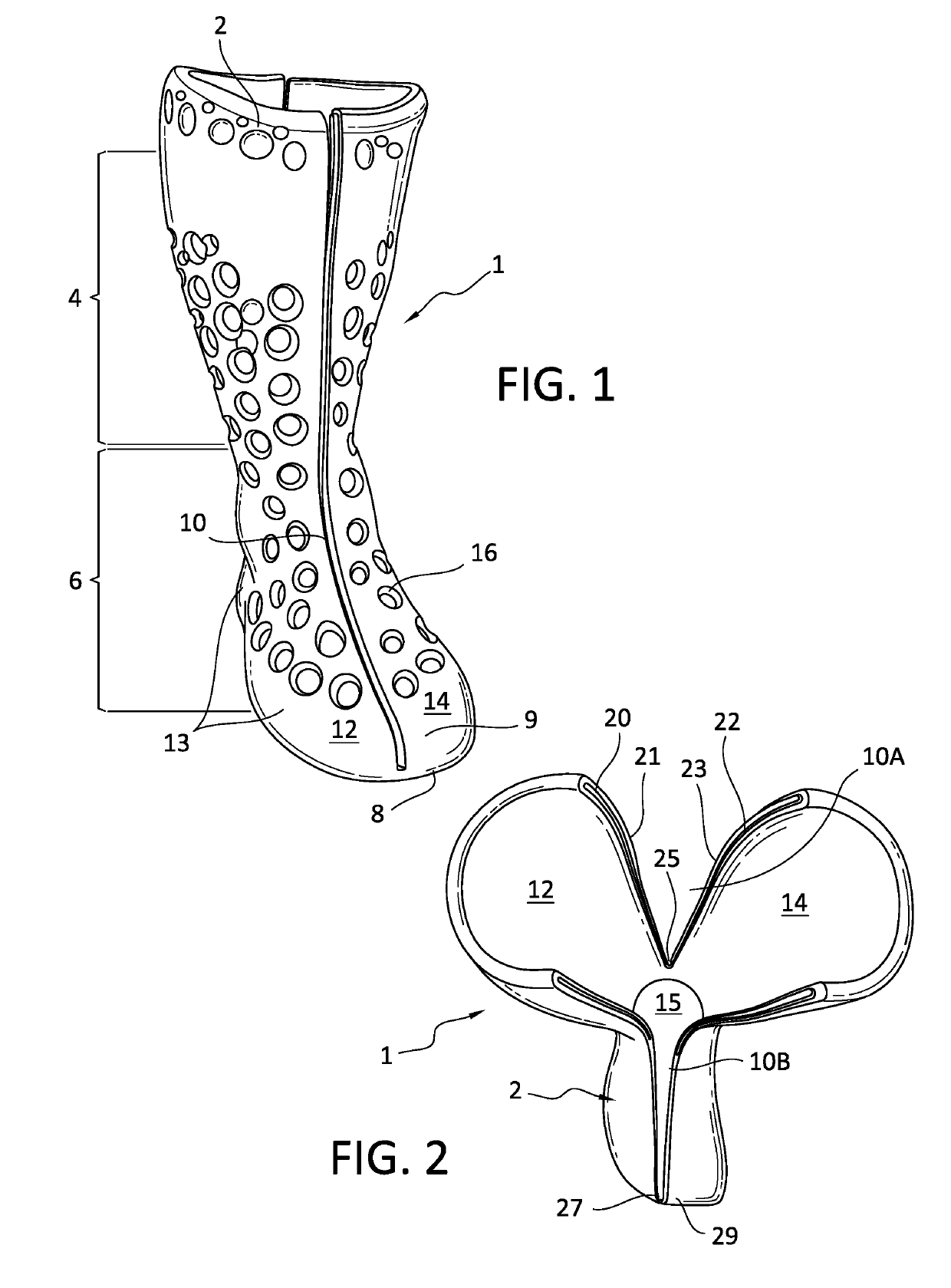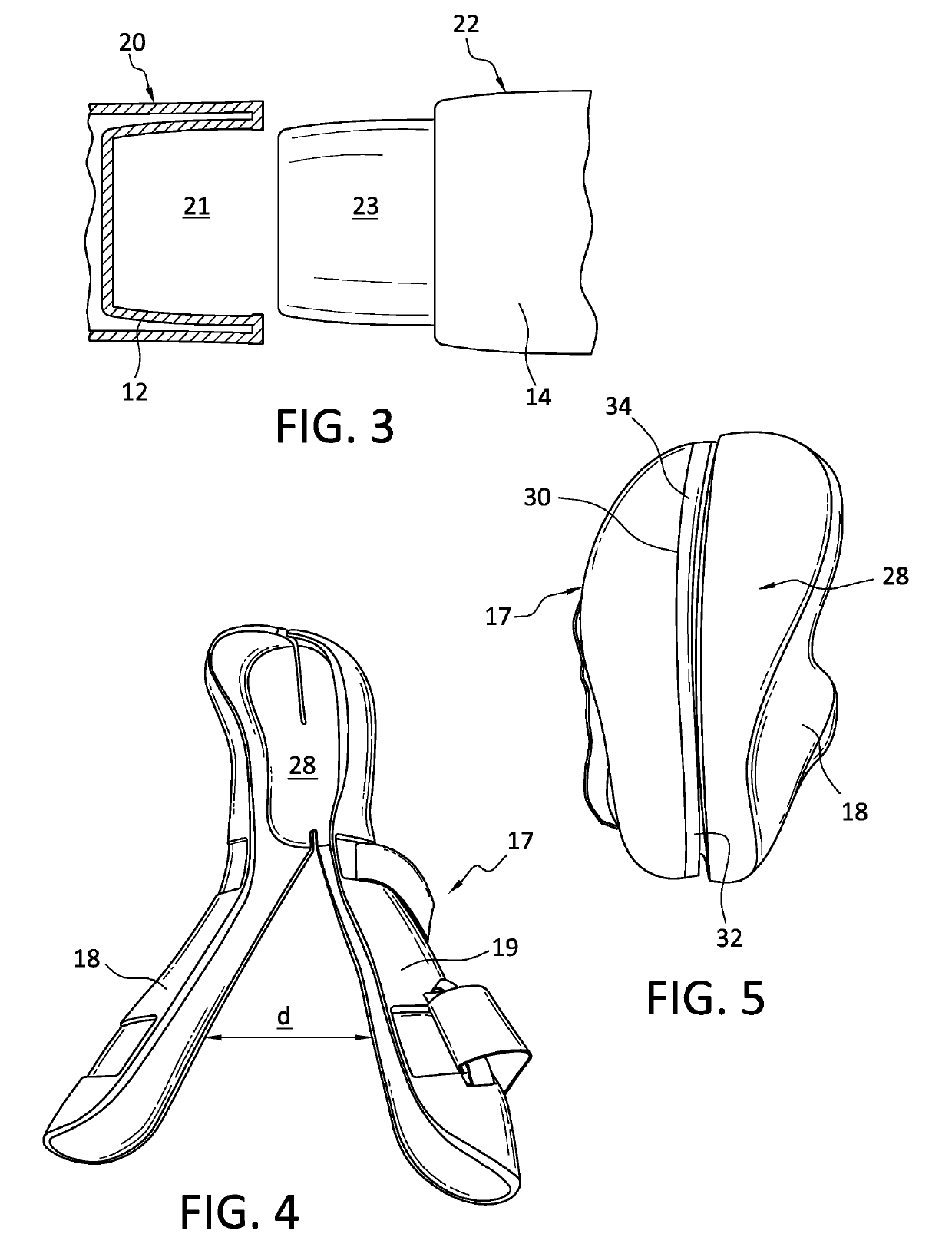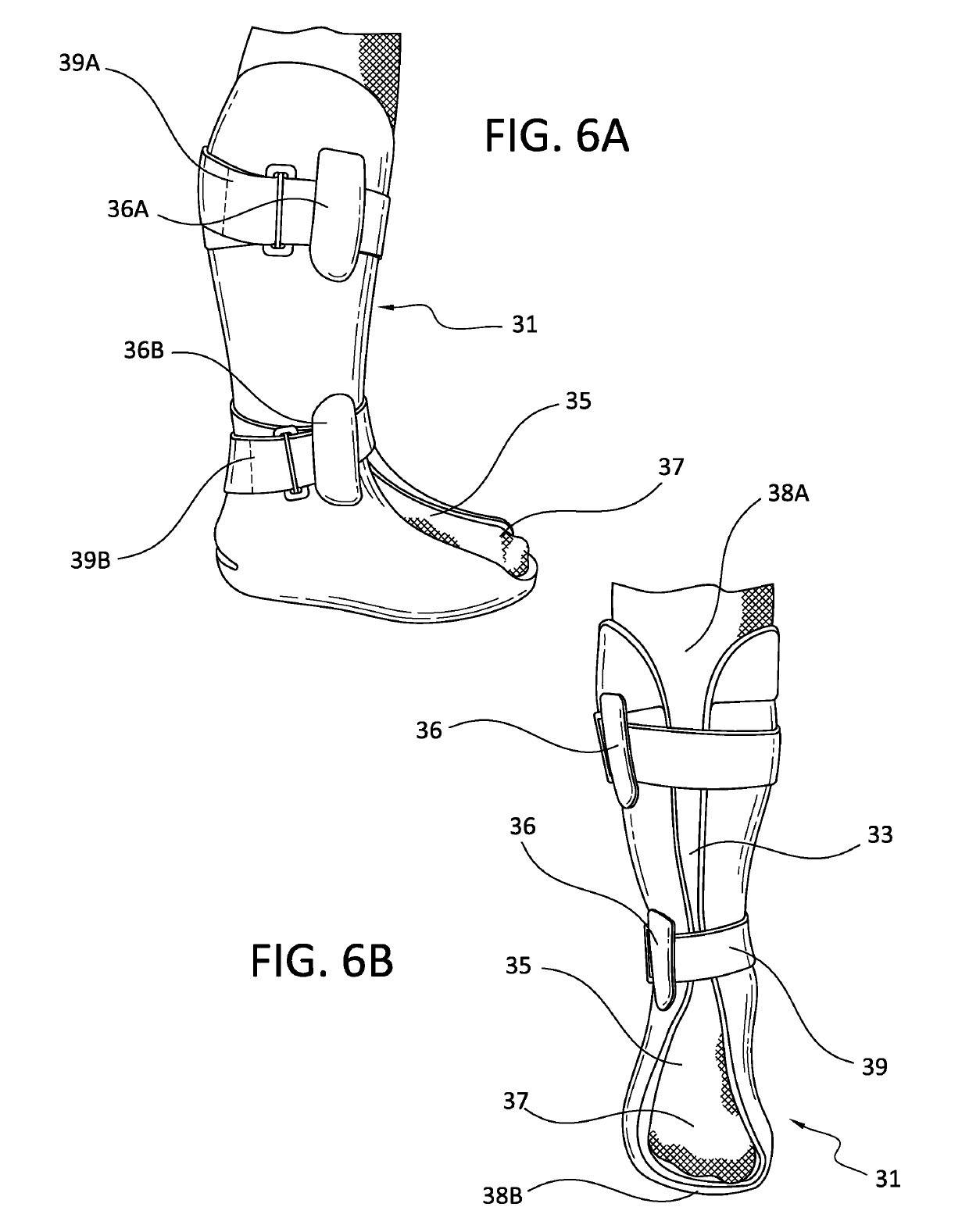Orthopedic walker
a walker and orthopaedic technology, applied in the field of orthopaedic walker, can solve the problems of increasing severity without treatment, stabilization, protection, and/or protection, and achieve the effect of reliable protection and suppor
- Summary
- Abstract
- Description
- Claims
- Application Information
AI Technical Summary
Benefits of technology
Problems solved by technology
Method used
Image
Examples
Embodiment Construction
A. Introduction of Embodiments and Definitions of Terms
[0100]Embodiments of an orthopedic walker are used for donning and doffing on a user and are provided for stabilizing and supporting anatomical portions of a user, for example, the lower leg, ankle, and foot of a user.
[0101]The walker has a semi-rigid or rigid body material to reduce the complexity, cost, and weight of the walker. The semi-rigid nature of the body material provides rigid support when worn on the limb and allows the walker to resiliently hold or return to its original shape, while having some degree of flexibility or resiliency to facilitate regular donning and doffing. Unlike conventional orthopedic walkers, a preferred embodiment of the walker body is constructed from a single material and obviates the necessity of providing different structural materials. The walker eliminates the need for securing different materials together with adhesives and fasteners and has enough strength and resiliency to withstand nor...
PUM
| Property | Measurement | Unit |
|---|---|---|
| distance | aaaaa | aaaaa |
| width | aaaaa | aaaaa |
| thickness | aaaaa | aaaaa |
Abstract
Description
Claims
Application Information
 Login to View More
Login to View More - R&D
- Intellectual Property
- Life Sciences
- Materials
- Tech Scout
- Unparalleled Data Quality
- Higher Quality Content
- 60% Fewer Hallucinations
Browse by: Latest US Patents, China's latest patents, Technical Efficacy Thesaurus, Application Domain, Technology Topic, Popular Technical Reports.
© 2025 PatSnap. All rights reserved.Legal|Privacy policy|Modern Slavery Act Transparency Statement|Sitemap|About US| Contact US: help@patsnap.com



